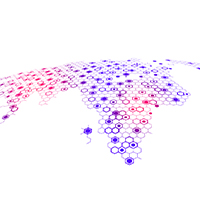Women who changed cancer research: A timeline
Oncology is shaped by trailblazers who challenged science – and often, society. For too long, the contributions of women in cancer research and drug development have been under-recognised.
Despite their seminal contributions to improving the standard and accessibility of cancer treatments, these early medical pioneers faced a scientific establishment that often relegated women to pathology labs or assistant roles, but their foundational work would echo through generations of cancer research.
This timeline traces the defining moments and the determined individuals who advanced not just cancer treatment, but equity in science itself.
1890s-1920s:
The unlikely pioneers
Long before "oncologist" was even a word, Rose Hawthorne Lathrop was already rewriting the rules of cancer care. The daughter of celebrated author Nathaniel Hawthorne, Lathrop could have lived comfortably off her literary legacy. Instead, she chose a different path– one that led her to become one of America's first oncology nurses and an early champion for terminal cancer patients.
After becoming a Catholic nun in the late 1800s, Lathrop turned her attention to communities ravaged by both poverty and a disease that was both deeply misunderstood and heavily stigmatised. She began by training as a nurse at the New York Cancer Hospital in 1896, the first institution in the US to provide dedicated training for cancer treatment. Then, in 1899, she opened St Rose's Free Home for Incurable Cancer in New York, a facility that would serve patients for over a century until closing in 2009. Her approach was radical for its time: treating cancer patients with dignity and compassion when society largely shunned them and general hospitals refused to admit them.
Around the same time, perhaps one of the most famous contributors to modern cancer treatment, Marie Curie, was hard at work exploring the existence of two new chemical elements – polonium (named in honour of her native Poland), and radium. Between 1898 and 1902, Marie, alongside her husband Pierre, published, jointly or separately, a total of 32 scientific papers, including one that announced that, when exposed to radium, diseased, tumour-forming cells were destroyed faster than healthy cells. In 1903 Curie was the first woman to receive a Nobel Prize in Chemistry, followed by a second Nobel in 1911, both prizes being awarded for her work in the field of radiation.
1940s-1960s:
The chemotherapy revolution gets its champions
Across the Atlantic and a few decades later, other women quietly laid scientific groundwork that would prove crucial to cancer research. Gerty Cori would later win the Nobel Prize in 1947 alongside her husband and research partner Carl Ferdinand Cori "for their discovery of the course of the catalytic conversion of glycogen." But, while her contributions were not awarded the same societal recognition as her husband, Gerty Cori’s efforts in the lab were helping to establish principles that researchers would eventually use to understand how cancer cells fuel themselves.
The mid-20th century brought both unprecedented opportunity and familiar obstacles for women in cancer research. As World War II created shortages in medical personnel, women found new openings in clinical roles – though leadership positions remained frustratingly elusive.
Enter Mary Woodard Lasker, a charming force of nature who understood that fighting cancer required fighting for funding. In 1943, alarmed at the limited size, purpose, and ambition of the American Society for the Control of Cancer, she and her husband Albert – a master of the advertising arts – launched a campaign that essentially created the modern American Cancer Society from a reluctant organisation of physicians. But Lasker wasn't content to stop there. Her relentless lobbying led to dramatic increases in National Institutes of Health funding and culminated in the landmark 1971 National Cancer Act. As she later reflected, "Medical research is a gift – a legacy that we leave for the next generation." By her count, seven million American lives were saved as a direct result of the National Cancer Programme she helped create.
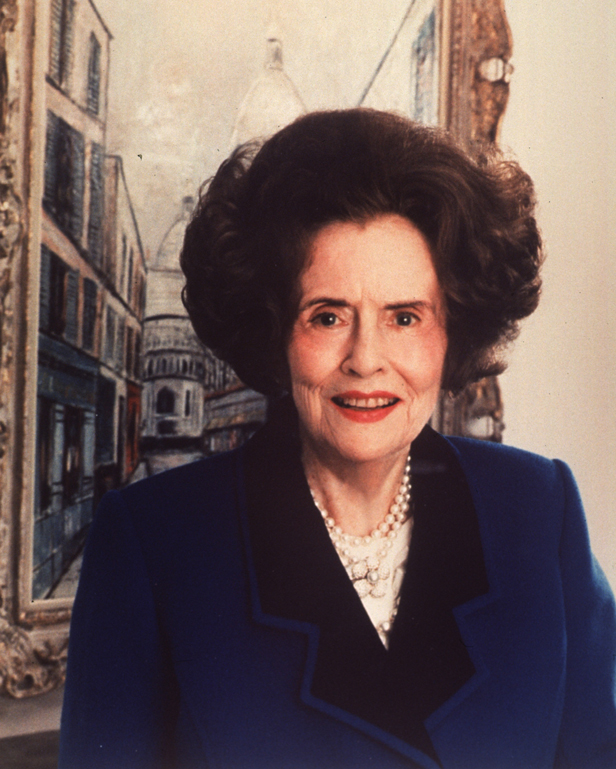
Pictured: Mary Woodard Lasker. Image credit: United States National Library of Medicine, via Wikimedia Commons
While Lasker was reshaping cancer policy, other women were advancing the science itself. Dr Jane C Wright, a pioneering Black physician-scientist, was developing individualised approaches to chemotherapy dosing. Undeterred by the medical establishment's scepticism about chemotherapy, she dove headfirst into testing anti-cancer chemicals. Beginning in 1949, Wright and her father began methodically testing new compounds against human leukaemias and other cancers – work that seemed almost reckless to their more conservative colleagues. Their persistence paid off spectacularly when the team’s pivotal 1951 research established methotrexate's effectiveness against breast cancer, laying the cornerstone for modern chemotherapy treatment. Determined to see her research impact clinical care, she went on to become a founding member of the American Society of Clinical Oncology (ASCO), with the goal of improving knowledge of the field and setting standards for clinical oncology.
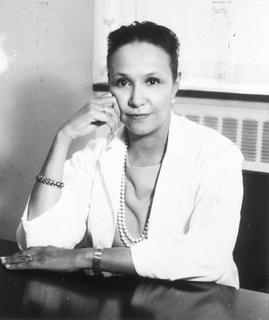
Pictured: Jane Cooke Wright. Image credit: National Library of Medicine, via Wikimedia Commons
Dr Sarah Stewart was making her own groundbreaking discovery in the 1950s – identifying the first cancer-causing virus in mammals, the polyomavirus, which challenged prevailing assumptions about how cancer develops.
Over in the UK, Irish virologist Dr Yvonne Barr was helping to overturn one of cancer research's most entrenched assumptions: that viruses couldn't cause cancer. Working in Anthony Epstein's London lab in 1963, the then 31-year-old Barr had already gained quite a reputation for her superior laboratory skills when she was put to task studying culture tumour samples from Ugandan children with Burkitt's lymphoma. Through painstaking electron microscopy work, Barr and the team discovered virus particles lurking inside cancer cells – the first cancer-causing virus ever identified. The Epstein-Barr virus, as it came to be known, opened an entirely new field of cancer research. Sadly, Barr's promising research career was cut short by the sexism she encountered in academia, and she left research to become a biology teacher in Australia.
1970s-1980s:
Clinical trials meet patient power
The 1970s and 80s marked a turning point for cancer treatment, where rigorous science began meeting patient advocacy – with women leading the charge on both fronts. Dr V Craig Jordan's collaboration with Dr Angela Brodie on anti-oestrogen therapy helped establish the scientific foundation for tamoxifen and aromatase inhibitors, drugs that would save countless lives in hormone-positive breast cancers.
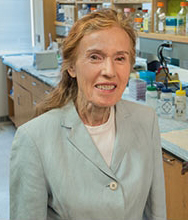
Pictured: Angela Hartley Brodie. Image credit: University of Maryland via Wikimedia Commons
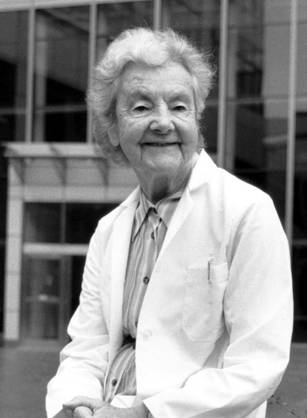
Pictured: Dr Audrey Elizabeth Evans. Image credit: National Library of Medicine, public domain via Wikimedia Commons
In paediatric oncology, the “mother of neuroblastoma”, Dr Audrey Evans was revolutionising treatment for children with cancer, staunchly fighting in favour of treating young patients with chemotherapy, and developing a disease classification system for neuroblastoma, which assessed a patient’s age, location, and state of the tumour. Under her leadership, neuroblastoma fatalities declined by an astounding 50%.
But science alone wasn't enough. Rose Kushner, a journalist who became an activist after her own breast cancer diagnosis, challenged the paternalistic treatment norms of the era. She pushed for informed consent in clinical trials and demanded that patients have a voice in their own care – concepts that seem obvious now, but were revolutionary at the time.
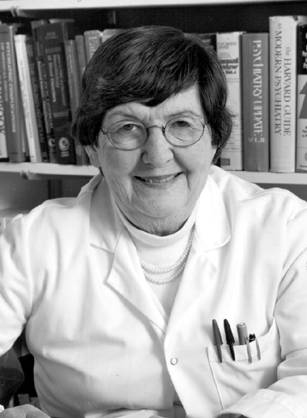
Pictured: Jimmie C Holland. Image credit:NIH public domain via Wikimedia Commons
Dr Jimmie Coker Holland was asking different but equally important questions: What about the human side of cancer? After earning her medical degree and board certification in psychiatry, Holland helped to establish the field of psycho-oncology. At Memorial Sloan Kettering Cancer Center, she and two colleagues created the country's largest psycho-oncology training and research programme, recognising that treating cancer meant treating the whole person, not just the disease. Her founding of the American Psychosocial Oncology Society in 1986 formalised what many patients already knew – that the emotional and social impacts of cancer were just as real as the physical ones.
1990s-2000s:
The targeted therapy era takes flight
As the new millennium approached, cancer research was becoming increasingly sophisticated – and women were finally claiming more prominent roles in driving major discoveries. Dr Susan Desmond-Hellmann at Genentech led the development of Herceptin, a targeted therapy that transformed treatment for HER2-positive breast cancer.
Dr Elizabeth Blackburn's groundbreaking work on telomerase – the enzyme that controls cellular ageing – earned her the Nobel Prize in 2009 and opened new avenues for understanding cancer cell immortality.
Meanwhile, Professor Helen Bryant at the Yorkshire Cancer Research Institute was conducting equally crucial work from her lab at the University of Sheffield. Starting in 2002, Bryant was studying DNA and providing vital evidence that PARP inhibition could kill cancer cells while leaving normal cells unharmed – a radically different approach that promised to reduce the brutal side effects of chemotherapy. Her laboratory discoveries would prove essential to the development of these groundbreaking drugs.
In Newcastle, Dr Ruth Plummer was quietly transforming cancer treatment in an entirely different way. Working with a team funded by The Cancer Research Campaign, Plummer was developing PARP inhibitors – drugs that exploit cancer cells' DNA repair weaknesses. The science was elegant: cancer cells with faulty BRCA1 or BRCA2 genes were especially vulnerable to these compounds. In 2003, Plummer became the first person in the world to write a prescription for rucaparib – a PARP inhibitor – launching clinical trials that would eventually lead to approved treatments for BRCA-related cancers.
The success was remarkable. Drugs like olaparib and rucaparib are now licensed for people with BRCA-related ovarian, breast, fallopian tube, pancreatic, and prostate cancers. Over 140,000 people around the world have been treated with olaparib alone, and that number continues to grow rapidly. For her contributions to experimental cancer medicine, Plummer was awarded a Fellowship from the Academy of Medical Sciences in 2018 and an MBE in 2022.
2010s:
Shifting the leadership landscape
The 2010s marked a true inflexion point. Former Bristol Myer’s Squibb board member Dr Laurie Glimcher became the first female dean of Weill Cornell Medical College and emerged as a leader in cancer immunology. Her research identified key transcriptional regulators of protective immunity and the origin of pathophysiologic immune responses underlying autoimmune, infectious, and malignant diseases – pioneering a field that would soon produce revolutionary treatments like checkpoint inhibitors.
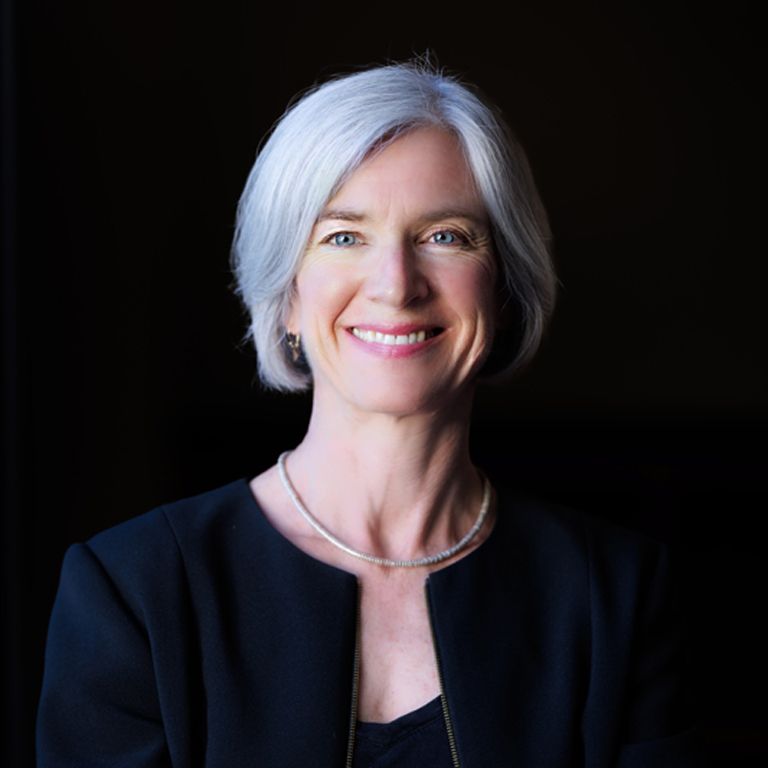
Pictured: Jennifer Doudna. Image credit: Christopher Michel CC BY-SA 4.0 via Wikimedia Commons
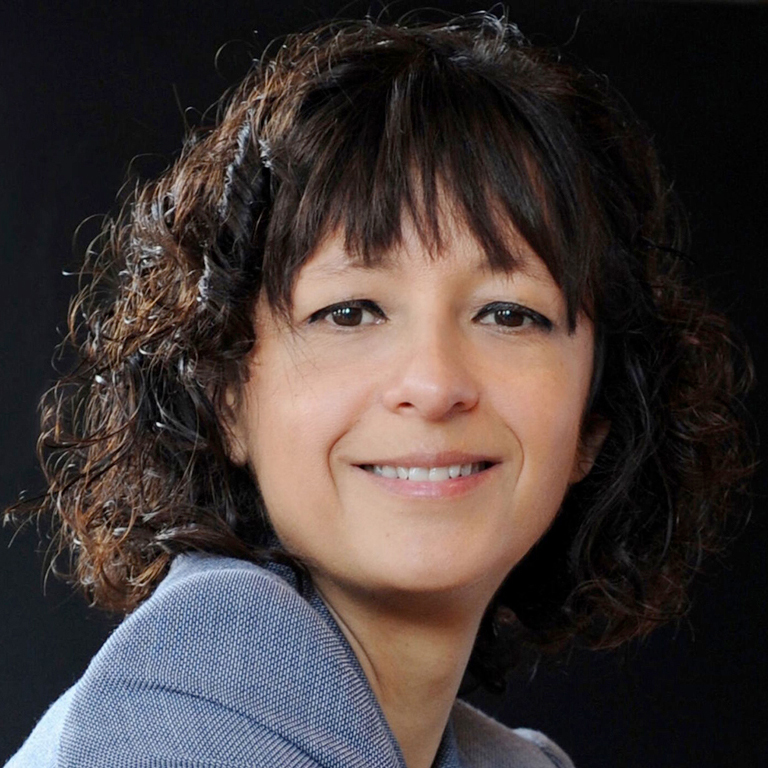
Pictured: Emmanuelle Charpentier. Image credit: Bianca Fioretti, Hallbauer & Fioretti, CC BY-SA 4.0 via Wikimedia Commons
The decade also witnessed a revolution in cancer treatment approaches that would have seemed like science fiction just years earlier. Jennifer Doudna's development of CRISPR-Cas9 gene editing technology – for which she would later win the Nobel Prize for chemistry alongside French professor and researcher Emmanuelle Marie Charpentier – opened unprecedented possibilities for precisely targeting cancer at the genetic level.
Meanwhile, immunotherapy was transforming from experimental treatment to standard care, with researchers like Isabelle Rivière helping pioneer CAR-T cell therapies that reprogramme patients' own immune systems to fight cancer. The precision medicine revolution was also taking hold, as genomic sequencing became routine in cancer diagnosis and treatment planning, allowing doctors to match treatments to the specific genetic signatures of individual tumours.
Major pharmaceutical companies, perhaps recognising both the moral imperative and business case for diversity, began implementing internal DEI programmes specifically targeting gender gaps in leadership and scientific advisory roles. The message was becoming clear: diversity wasn't just the right thing to do – it was essential for innovation.
2020s:
The new generation takes charge
Today's cancer research landscape would be barely recognisable to Rose Hawthorne Lathrop. Women now lead high-profile oncology divisions at Merck, Roche, AstraZeneca, Bristol Myers Squibb, and other major pharmaceutical companies.
At the very pinnacle of American cancer research, Dr Monica Bertagnolli became the second woman to serve as NIH Director and the first surgeon to hold the position, bringing her expertise as a surgical oncologist and former ASCO president to the role after leading the Cancer Moonshot initiative as NCI Director. She was preceded in that position by Dr W Kimryn Rathmell, who served as the 17th Director of the National Cancer Institute and is renowned for her research in kidney cancer biology and treatment.
At institutions like MD Anderson Cancer Center, researchers like Dr Padmanee Sharma are pushing the boundaries of immunotherapy, while geneticists such as Dr Guillermina Lozano advance our understanding of the p53 tumour suppressor gene. Perhaps more importantly, a new generation of leaders is bridging the gap between rigorous science and lived patient experience, particularly in breast, ovarian, and rare cancers that disproportionally impact women.
The path from Lathrop's compassionate care in 1890s New York to today's global precision oncology landscape has been neither straight nor smooth. But at each critical juncture, determined women have pushed the field forward – often despite the obstacles placed in their way, sometimes by removing those obstacles entirely. Their legacy lives on not just in the treatments they developed or the policies they championed, but in the doors they opened for subsequent generations of cancer researchers and advocates.
The fight against cancer continues, but it's increasingly a fight led by the full spectrum of human talent – regardless of gender.
About the Author
Eloise McLennan is the editor for pharmaphorum’s Deep Dive magazine. She has been a journalist and editor in the healthcare field for more than five years and has worked at several leading publications in the UK.
Supercharge your pharma insights: Sign up to pharmaphorum's newsletter for daily updates, weekly roundups, and in-depth analysis across all industry sectors.
Want to go deeper?
Continue your journey with these related reads from across pharmaphorum
Click on either of the images below for more articles from this edition of Deep Dive: Market Access and Commercialisation 2025








